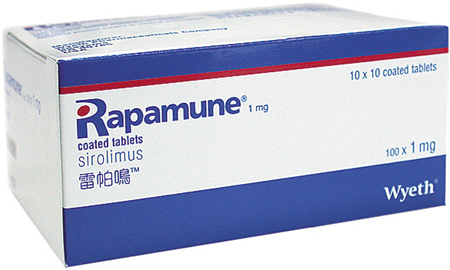I’ve argued against the conventional wisdom on cholesterol many times on this site. The conventional wisdom on cholesterol is full of holes.
Questions on atherosclerosis
Someone who believes in the conventional wisdom, namely that cholesterol clogs arteries, pointed me to an article called Twenty questions on atherosclerosis, by William C. Roberts, M.D. Roberts is the Executive Director of the Baylor Heart and Vascular Institute, and the Editor-in-Chief, The American Journal of Cardiology and Baylor University Medical Center Proceedings. In other words, a cardiologist’s cardiologist. He writes:
Is atherosclerosis a disease affecting all animals or only certain animals?
Atherosclerosis affects only herbivores. Dogs, cats, tigers, and lions can be saturated with fat and cholesterol, and atherosclerotic plaques do not develop.
I was easily able to find that “Dogs with atherosclerosis were over 53 times more likely to have concurrent diabetes mellitus than dogs without atherosclerosis”. Diabetes increases the risk of atherosclerosis greatly, 53 times more in dogs. So, not only do dogs get atherosclerosis, against what Dr. Roberts says, when they do it appears to have nothing to do with cholesterol.
Are human beings herbivores, carnivores, or omnivores?
Although most of us conduct our lives as omnivores, in that we eat flesh as well as vegetables and fruits, human beings have characteristics of herbivores, not carnivores (2). The appendages of carnivores are claws; those of herbivores are hands or hooves. The teeth of carnivores are sharp; those of herbivores are mainly flat (for grinding). The intestinal tract of carnivores is short (3 times body length); that of herbivores, long (12 times body length). Body cooling of carnivores is done by panting; herbivores, by sweating. Carnivores drink fluids by lapping; herbivores, by sipping. Carnivores produce their own vitamin C, whereas herbivores obtain it from their diet. Thus, humans have characteristics of herbivores, not carnivores.
There’s a lot to unpack there, so I’ll just leave the following chart:

Humans look far more like carnivores than herbivores.
Update: Several people have pointed me to the above chart at various times, which was compiled from a series of articles by the late Barry Groves. That said, I don’t know who actually made the chart. So, as additional support for the idea that humans are not natural vegetarians, see this article, How Humans Became Meat Eaters.
Is atherosclerosis a consequence of aging and therefore a degenerative disease?
No…
Another chart (source), which shows that age is a major, perhaps the major, risk for atherosclerosis:

What risk factors predispose to atherosclerosis?
Risk factors include hypercholesterolemia, systemic hypertension, diabetes mellitus, obesity, low HDL cholesterol, cigarette smoking, and inactivity.
This is perhaps the most interesting of Roberts’ answers. He listed 7 risk factors, and only one of them is high cholesterol. If high cholesterol causes atherosclerosis, how can diabetes or hypertension or smoking be risk factors? They have nothing to do with cholesterol and show that cholesterol either doesn’t cause atherosclerosis or is a relatively unimportant factor.
Of the various atherosclerotic risk factors, which one is an absolute prerequisite for development of atherosclerosis?
The answer is hypercholesterolemia. What level of total cholesterol and specifically LDL cholesterol is required for atherosclerotic plaques to develop? Symptomatic and fatal atherosclerosis is extremely uncommon in societies where serum total cholesterol levels are <150 mg/dL and serum LDL cholesterol levels are <100 mg/dL
As I wrote about here, the typical heart attack patient has a normal cholesterol level, but is glucose intolerant. So high cholesterol isn’t required for atherosclerosis, but glucose intolerance may be.
What evidence connects atherosclerosis to cholesterol?
The connection between cholesterol and atherosclerosis is strong.
He says herbivores get atherosclerosis when fed cholesterol. Humans aren’t herbivores, who don’t normally consume cholesterol, since it’s not found in plant foods.
He says atherosclerosis increases at cholesterol levels above 150 mg/dl. I already showed above that the typical heart attack patient has normal cholesterol; also, high cholesterol is associated with longer life.
He says the higher the LDL cholesterol, the more atherosclerosis. But in people over age 50, the lower the cholesterol, the greater the risk of death: 11% increased risk of death, and 14% increased risk of death from cardiovascular disease, with each 1 mg/dl decrease in cholesterol.
Roberts goes on to praise the efficacy and safety of statins. However, more recent trials of statins have been less than spectacular, and many found no benefit.
Is it important to lower elevated serum triglyceride levels?
Yes.
Triglycerides are not cholesterol, and if it’s important to lower them – and it definitely is – then that shows that something besides cholesterol causes atherosclerosis. Elevated triglycerides are seen in diabetes and insulin resistance.
Can niacin and fibrates be used effectively and safely in combination with the statin drugs?
Yes.
No incremental benefit to niacin.
Conclusion
Dr. Roberts is wrong in most if not all of his assertions and conclusions. Cholesterol doesn’t appear to cause cause atherosclerosis.
Yet this is the conventional wisdom used by doctors to treat patients right now.
Yet another instance in which mainstream medicine got it wrong.











24 Comments
So what is your position on niacin now?
I think niacin can be useful with occasional use during fasting to promote autophagy, but it doesn’t appear to be effective with daily use against CVD.
PD : read the link you suggested re Niacin. I am perplexed as the link does not say what form of Niacin was being used and there are 3-4 different forms with different effects.
Also they state this:
” When each lipid-lowering intervention was examined separately (eg, trials of fibrates vs trials of interventions other than fibrates), use of fibrates was the only intervention that explained a statistically significant degree of variability in the log odds ratio for overall mortality (coefficient, 0.14; 95% CI, 0.004 to 0.27), indicating a positive association of fibrates with overall mortality.”
But there is no further explanation.
No tht I thinkis teasing & frustrating & poor research.
Do you have anything to add ?
The first link states “extended-release niacin, 1500 to 2000 mg per day” but I presume you mean the review at the second link. As for fibrates, I don’t know enough about them to have an opinion; I had been looking for a reference for a statement I’ve read many times from cholesterol skeptics, which is that degree of cholesterol-lowering by drugs does not correlate with degree of atherosclerosis, LDL level doesn’t either, and that statins are the only cholesterol-lowering drugs that have been shown to have benefit, while other cholesterol-lowering drugs like fibrates do not.
Thanks for the reply PD.
A couple of additional points:
1 : Fibrates are not the same as B3. At least from what I have read in Wikipedia. Fibrates are classed there as a prescription only drug. While B3 ( Niacin ) is an over the counter supplement. Also the side effects listed for each are quite different.
2: You did a good post of Niacin in 2015 and there are quite a few comments there which clarify things for Niacin…
3 : While Niacin raises HDL-C in the blood and this is thought to be a good effect, there are also warnings about is being associated with a “higher all cause mortality’..
I have been thinking about this ‘warning’. I am perplexed by it. As a statement is remains isolated and unresearched at least as far as I can tell from my own looking online. I wonder what the confounders in the study were when this was written up.
Eg, were the study participants that gave this result doing anything else, or NOT doing anything else that could impact mortality, such as a high carb/sugar type diet ?
I think it’s pretty much given that everyone is eating a high carb/sugar diet in these studies, because that’s how almost everyone eats. Whether anyone would need statins (or niacin or anything similar) if they were eating low-carb whole foods isn’t known, because no one looks at that, but I have little doubt that they wouldn’t.
So, everyone is on high sugar or high carb diets. And such diets are a major cause of CVD – not LDL-C.
Meanwhile Niacin which boosts HDL-C and so helps lower CVD mortality, has no impact at all on the other bad health effects of the high sugar / high carb diet = no improvement in overall mortality…
I wonder if there have been any studies on the results of Niacin as a supplement for people like ourselves on lower carb/higher saturated fat diets.
PS : I have been taking 1000mg of Niacin daily since last May. No adverse side effects at all. ( No flushing ) And I shall find out again about the impact on my HDL-C level ( again ) today.
Consuming cholesterol may not be associated with heart disease not seen in our gut cousins, the carnivore wolves. But the true cause of atherosclerosis plaques are deposits of oxidized cholesterol and oxidized fats as proven in the 50 y studies of the late 99 y old Dr .Kummerow..Cholesterol and most fats are easily oxidized on storage in air, and especially on frying and broiling. That may be the reason why wolves eating fresh raw meat don’t get clogged arteries. Cholesterol also is oxidized in vivo at higher ferritin levels in males than in females up to 50 y thereafter the same as for males. Ditto for eggs best eaten raw or boiled, not scrambled or for meats cooked at low temps in soups or stews. Plant sterols are chemically related to cholesterol hence best eaten without heating in salads rather than fried or baked.
Oxycholesterol (OC) is an established, strong inducer of atherosclerosis.
It appears to be kept out of public attention (despite many of studies on it), because it is formed in industrial food processing of animal products, especially if cholesterol comes into contact with oxygen from air.
Usually such chemical reactions are rather negligible because with usual boiling or frying only the surface of foodstuffs is exposed to oxygen.
In industrial processes in food processing, however, there is a common process used on massive scale that combines a huge surface area with high temperature during processing in air:
Spray drying.
This is used to produce common and widely used ingredients for the food industry,
for example egg (yolk) powder, and milk powder – both products are therefore high in OC content;
another common, somewhat less contaminated product is finely ground cheese (Parmesan) stored ground and not used freshly.
Elevated OC content is practically only found in such industrial food processing.
Potentially, the formation of OC in spray drying could be prevented by such processing in an oxygen-free gas;
this, however, would rise costs significantly and would need legislative action to force producers to do it.
According to this (German) source of a German food scientist animal feeding experiments to induce atherosclerosis often use a solution of cholesterol that is sprayed on the animal’s food; this produces OC due to the high surface area increasing reactivity with oxygen from air, and this causes the disease; not cholesterol itself.
It is implied that animals fed cholesterol in way no OC is generated do not develop arteriosclerosis.
If you are interested, use google translate etc. on this link in German:
https://www.deutschlandradio.de/archiv/dlr/sendungen/mahlzeit/152973/index.html
This is one of the most controversial areas in all of medicine. My position on this, and everything else medical for that matter, is that the total mortality rates trump all else. So on that note:
The Ibaraki health study,( Japan), 91,219 men and women. Ages 40-79. Followed 10 years.
Findings: All cause mortality inversely correlated with LDL cholesterol levels, so the higher the LDL, the greater the life expectancy.
Isehara study ( Japan) , 8340 men and 13,591 women. Ages 60’s and 70’s. Same inverse relationship with LDL as above. Cancer especially was lowest in the higher LDL group.
Jichi Cohort Study ( Japan) 12234 adults followed for 12 years.
Total mortality rates lowest in those with the highest TC levels.
HUNT Study( Norway). 52,087 men and women , ages 20-74, followed over 10 years.
For both men and women the highest total mortality was in those with TC levels 270. They concluded “” clinical and public health recommendations regarding the dangers of cholesterol should be revised.”
Leiden Study Netherlands also showed highest mortality with lowest TC levels.
Honolulu Heart Study Heart disease was linked to high TC levels, but cancer mortality showed an inverse relationship.
Finland. Followed those over 75 for 6 years and found that those with the lowest TC levels had double the death rates.
(For a more comprehensive look at this see Verner Wheelock)
There was a very good longitudinal study published in a nephrology journal which looked at HDL levels and longevity and found that the greatest longevity was in those with HDL’s between 40-50. This of course goes against the prevailing view that the higher the HDL the better.
The bottom line is always total mortality risk and to that end it would seem that the main risk is from those levels that are <194.
Just to add a rapamycin commercial, it was been widely noted that rapamycin raises cholesterol levels while preventing all age-related illnesses and increasing longevity. Just Saying.
Paul, thank you for this summary of the real evidence. I wonder if my own GP would pay any attention if I presented it to him at my next consultation tomorrow morning. Maybe but doubtful !
My only query is whether you could convert the data mentioned into the measurements used here in Australia, UK, New Zealand etc. IE nmol ?
I wonder why in this globalised world there are two different systems of measuring LDL, HDL etc.
Sure:
Mmol/L mg/100ml
<5.0 7 >270
That didn’t come out right. I’ll try it again.
In Mmol/L <5 is < 194 in mg/100ml, 5-5.9 is 194-228, 6-6.9 is 232-267, and greater than 7.o is greater than 270
Thanks Paul
A correction. The HUNT study showed the highest mortality rates in those with the Lowest TC levels ( < 5.0 or <194)
PD, You have done a a good demolition job on Roberts which will probably be ignored by 99% of doctors yet again.. Ahhh well stupidity & ignorance run rampant..
By the way there is a typo here
“Roberts goes on to praise the efficacy and safety of stains.”
Unfortunately, I don’t expect mainstream medicine to admit that they were wrong about cholesterol in my lifetime. There is simply WAY too much money to be made pushing statins for Big Pharma to allow things to change. And many (perhaps most) doctors simply find it easier to continue to prescribe statins when cholesterol is above a certain level (as they were taught in med. school, and as the drug companies of course continue to recommend), rather than actually dig into the growing mountain of evidence that cholesterol is not the problem at all. Sad but true.
Typo in the table: gall, not “gaul”, bladder.
In general, the whole argument is kind of silly. Neither wolves nor humans are ruminants – no need for a table to know that. Better make a table with, say, rodents or New World monkeys.
“impossible” for humans to live without animal proteins? This is just a false claim. Even infants survive with their soy formulas.
You’re right on that, although the fact that B12 deficiency causes severe problems including death may argue that we cannot survive without animal foods. Also, not my table.
Wowza, Dr. Roberts needs to prescribe himself some burn cream after this takedown
Thanks for the advice. I’m kinda worried since i use fibrates (are all fibrate medicine bad?).
Question: is acarbose the same as metformin? Which one is better, or do they complement each other? Thanks
No, acarbose isn’t the same as metformin, they have different mechanisms of action. The consensus judgment is that metformin is better, since it prevents cancer and makes lab animals live longer.
I’ve had explained as if cholesterol is band aid. So, if you have a lot of band aids on you, would you blame the band-aids…or the underlying cuts? Whatever is causing the irritation, such as bad carbs, is the source of the problem.